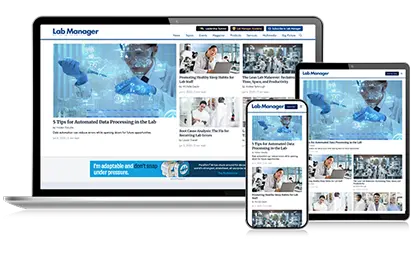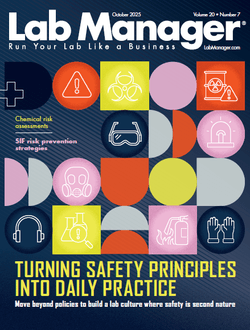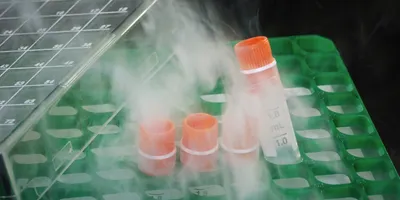New Approaches to Laboratory Information Management Offer Easy, Cost-Effective Methods for Solving a Ubiquitous Problem
The requirement to track information about samples— properties, location, activities, status, expiration and more—is not new. It is a pervasive need for labs that today have hundreds, thousands or even tens of thousands of samples in their inventory, stored in a variety of containers in numerous locations. Reliably tracking these samples as they make their way throughout the scientific process is difficult yet absolutely necessary. Nevertheless, transcription errors, wrong versions of files or other mistakes are all too common and can lead to delayed product rollouts—or may even result in a product never making it to market.
Two approaches to sample and storage management (SSM)
LIMS (Laboratory Information Management Systems) solutions first entered scientific labs more than 40 years ago, helping to capture, store and analyze the enormous amount of information that must be tracked and audited. Even though some LIMS treat sample management as an afterthought, until recently they remained the best method for tracking data for large, well-funded labs. However, they were cost-prohibitive to small and medium-sized labs, which make up approximately 80 percent of labs around the world.
Small and medium-sized labs find that they have to make do with spreadsheets or simple database systems, but quickly encounter problems of usability and scalability. Approaches based on spreadsheets, Word documents, lab notebooks, handwritten labels and the like are severely limited: managing information and trying to obtain trend data become time-consuming, error-prone and complex processes. Some smaller labs try to build their own professional LIMS SSM solution but find it difficult and costly, with historically high rates of failure.
SSM automation for labs of all sizes
Recently, efforts have been undertaken to more fully understand the requirements for automated SSM and to come to grips with the common needs that span labs of all sizes. Results show that there are four top requirements for an automated system if it is to be usable by small and large labs alike: usability, tailorability, compliance and cost.

LIMS can positively affect many parts of a lab organization.
Usability
The key requirement of an automated sample and storage management system is ease of use: it should be immediately usable and should make it very simple to enter, locate, report on and manipulate samples. Many lab workers report they will spend 15 to 30 minutes locating a sample, on average. A good SSM system will make it easy for a user—even a first-time user of the system—to find samples within seconds. It will provide a flexible way to quickly identify a sample by any combination of characteristics and will show precisely where it is located— down to the individual well in a plate. In order to be usable, the system must be easily used by multiple users, fit seamlessly into existing workflows, and should have a user interface that is patterned after commonly used and familiar computer programs such as Microsoft Outlook and Excel.
Tailorability
Large LIMS are often billed as “customizable,” meaning that changes can be made to the system to accommodate changes in samples, workflow, processes and the like. However, this generally means that the lab will need to go to its IT department or the LIMS vendor and request specific changes—a lengthy process that is always costly. A good SSM system should allow users at the lab level, without involvement of consultants or IT, to make changes themselves without the need to do any programming. User interfaces should optimally be familiar, with “drag and drop” capabilities and contextual menus that give the everyday user the ability to quickly design storage locations, import new sample types, create sample characteristics, print custom bar code labels and more.

SciLIMS SSM provides a friendly user interface with extensive tailorability.
Compliance
Quality and compliance must be at the core of any SSM product offering. In some cases, it is important that the product address stipulated requirements to meet applicable compliance standards, such as ISO 9001 2000, 21CFR11, GxP, SOX and others. Again, usability is key. The system must quickly become part of the fabric of everyday operations; in other words, a user should be able to easily check samples in and out, automatically creating a strong audit trail and chain of custody for samples. Reports should be easily produced in a variety of formats, with the ability to easily sort and select various characteristics of the samples.
Cost
A good SSM solution will not require expensive investments in capital equipment, servers, database systems or new operating systems just to get started. Instead, it will use existing desktop systems. New technologies will allow SSM solutions to be provided on an on-demand basis, meaning that the software can be delivered as a service. The only cost for such a system is a simple monthly per-user subscription cost (and new users can be signed up as desired), dramatically reducing the amount of money required to implement a professional LIMS.
Software-as-a-Service Solution
The challenge of providing professional LIMS for labs of all sizes, in a cost-effective yet feature-rich solution, was met by Sciformatix Corporation earlier this year when it introduced the SciLIMS Samples and Storage Management (SSM) solution. The solution uses the highly efficient Software-as-a- Service delivery model, bringing low initial cost of ownership, rapid deployment, low internal IT resource requirements and superior growth management. Bringing professional LIMS to segments of the market that have been bypassed by traditional LIMS, the SciLIMS SSM solution can be implemented in a single day and starts delivering results immediately.
Sciformatix solutions run on existing lab desktop systems and provide a familiar user interface that is extremely easy to use. Functionality is not sacrificed for cost and flexibility: the solutions provide compliant user authentication and authorization, secure data communications and encryption, and a complete history of each operation and operator. Most important, labs can easily tailor the solution to their unique activities, requirements and workflows.
Conclusion
New approaches to software delivery are bringing real benefits to labs of all sizes as they struggle to keep up with a growing number of samples and storage locations. By making use of professional SSM solutions that are easy to implement and use, labs can achieve improved sample tracking, organization and reporting. And by utilizing the latest in secure, on-demand and user-tailorable software, labs will finally be able to enjoy LIMS when they want it, the way they want it.
New Approaches to Laboratory Information Management Offer Easy, Cost-Effective Methods for Solving a Ubiquitous Problem
The requirement to track information about samples— properties, location, activities, status, expiration and more—is not new. It is a pervasive need for labs that today have hundreds, thousands or even tens of thousands of samples in their inventory, stored in a variety of containers in numerous locations. Reliably tracking these samples as they make their way throughout the scientific process is difficult yet absolutely necessary. Nevertheless, transcription errors, wrong versions of files or other mistakes are all too common and can lead to delayed product rollouts—or may even result in a product never making it to market.
Two approaches to sample and storage management (SSM)
LIMS (Laboratory Information Management Systems) solutions first entered scientific labs more than 40 years ago, helping to capture, store and analyze the enormous amount of information that must be tracked and audited. Even though some LIMS treat sample management as an afterthought, until recently they remained the best method for tracking data for large, well-funded labs. However, they were cost-prohibitive to small and medium-sized labs, which make up approximately 80 percent of labs around the world.
To continue reading this article, sign up for FREE to

Membership is FREE and provides you with instant access to eNewsletters, digital publications, article archives, and more.











